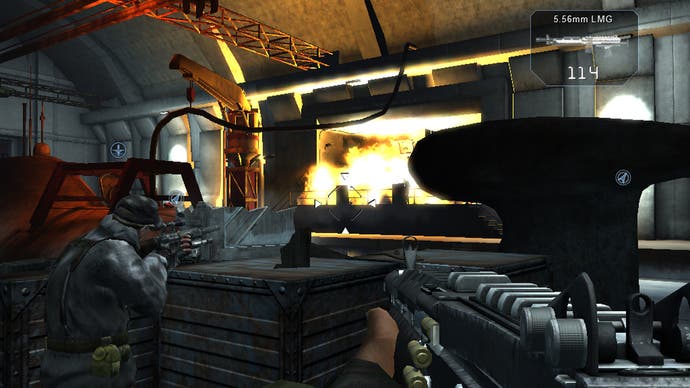Conflict: Denied Ops
Super sharp shooter?
Everything's going all casual these days - sex, Fridays, commercially successful first-person tactical shooter series. Just look at Conflict: Denied Ops. It's in development at Pivotal Games, it's coming to PC, PS3 and Xbox 360 this spring, and as designer Terry Watts explains, it's the first time a Conflict game has been aimed at casual players.
"In the previous games, because there was so much depth in terms of the tactics and the control system, it meant people were often put off by how much they had to learn to get into the game," he explains.
"We really wanted to improve on that. We wanted to be able to give the game to someone who'd never played a Conflict title before and watch them get on with it. In previous games they possibly needed to spend a little bit of time with it to get into it, but hopefully with Denied Ops we can just give the pad to somebody and they'll have a good time."
So how do you make a first-person tactical shooter series more accessible? For starters, you don't make it first-person; Denied Ops is the first Conflict title to feature a third-person viewpoint. "We did spend a lot of time deciding that, but this game for us was about changing the Conflict brand slightly and expanding in a new direction," says Watts. "We thought we'd take a chance and try to attract new players."
Army of two
Another key decision Pivotal took when considering how to make the game appeal to a wider audience was to reduce the squad size. Now you're dealing with two rather than four men, and you can take direct control of them at any time or issue orders by pressing a single button.

Each character has a different skill-set. Graves is a sniper, while Lang is into heavy weapons. His advantage in close-quarters combat is offset by the fact he's slightly slower than Graves. Some objectives can only be achieved by one of the characters - if a computer needs hacking, for example, Graves is the only man for the job.
According to Watts, this two-man system is easier for casual players to manage and also allows them to complete missions in a way that suits their style of play. However, it's also what should ensure the game still appeals to more hardened shooter fans.
"You've got complete freedom in all the levels to go anywhere at any point, independent of where your partner's going," he says. "So there's a lot of tactics in there for both the casual and in-depth player."
If you prefer to fight from a distance you can complete objectives almost entirely as Graves, trusting that Lang will keep himself busy and follow where you lead. However, the one-button order system offers plenty of scope for developing more tactical strategies. You can order your partner to protect a specific area, to attack specific enemies, to draw fire while you make a move and so on.


